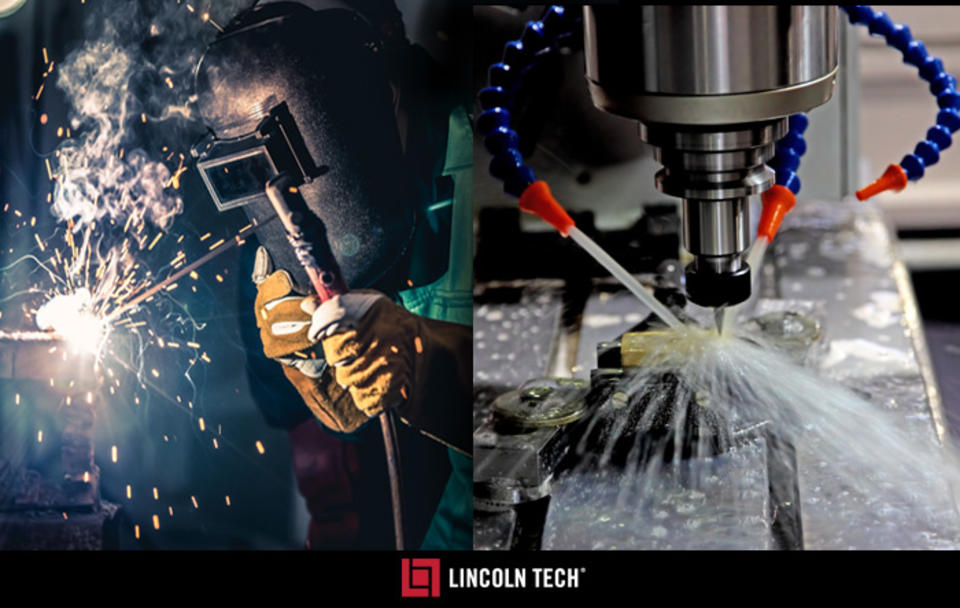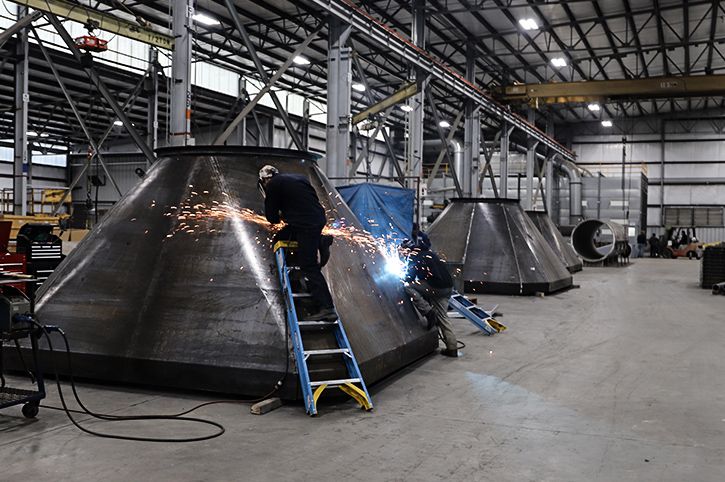Welding issues explained and solved by Montana Mobile Welding and Repair Belgrade Fabrication
Wiki Article
Everything about Welding: Key Insights Into Techniques and Finest Practices for Success
Welding includes a selection of methods, each fit for certain products and applications. Recognizing these methods, such as GMAW, SMAW, and TIG, is necessary for attaining ideal results. The ideal equipment and security techniques can not be neglected. As preparation and troubleshooting play critical duties in the welding procedure, mastering these components can substantially improve the quality of the end product. What are the vital aspects that guarantee an effective weld?Understanding Various Welding Techniques
Welding methods incorporate a range of methods, each matched to specific applications and materials. Amongst one of the most typical techniques are Gas Metal Arc Welding (GMAW), Shielded Steel Arc Welding (SMAW), and Tungsten Inert Gas Welding (TIG) GMAW, also called MIG welding, is popular for its rate and versatility, making it optimal for slim materials. SMAW, or stick welding, is favored for its simpleness and efficiency in outside atmospheres, specifically with thicker metals. TIG welding offers accuracy and control, making it suitable for complex work and non-ferrous metals (Belgrade). Each technique has its unique advantages and considerations, enabling welders to select the very best approach based upon the project's needs, material kind, and wanted outcomes. Understanding these techniques is vital for effective weldingNecessary Welding Equipment and Tools
While various welding methods require details abilities, the ideal equipment and tools are similarly essential for achieving high quality results. Essential welding tools includes welding equipments, which differ depending on the strategy-- such as MIG, TIG, or stick welding. Safety equipment, including aprons, gloves, and headgears, warranties safety and security and comfort during the procedure. On top of that, components and clamps assist protect materials in position, making certain accuracy in welds. Consumables like welding poles, cable, and securing gas are likewise crucial parts that influence the top quality of the weld. Devices such as cutters and mills help with surface area preparation and post-weld ending up, adding to a professional result. Spending in top notch equipment eventually enhances the performance and effectiveness of welding jobs.Security Practices in Welding
Correct safety practices are essential in the welding industry to shield workers from possible dangers. Welders must wear suitable personal protective equipment (PPE), consisting of headgears with appropriate shading, gloves, and flame-resistant clothing. Sufficient air flow is vital to lower direct exposure to hazardous fumes and gases produced throughout the welding procedure. In addition, workers must be educated in the proper handling of welding tools to avoid crashes. Fire precaution, such as keeping flammable materials far from the welding area and having fire extinguishers easily available, are essential. Regular evaluations of devices and workspaces can help identify possible risks before they result in accidents. By sticking to these safety methods, welders can produce a more secure working setting and decrease threats associated with their profession.Readying Materials for Welding
Preparing materials for welding is a vital action that greatly affects the high quality and stability of the end product (Montana Mobile Welding and Repair Fabrication). Appropriate preparation includes cleaning the surface areas to get rid of contaminants such as rust, oil, and dirt, which can endanger the weld. Techniques such as grinding, fining sand, or utilizing solvents are commonly employed to achieve a tidy surface area. Furthermore, making sure that the materials fit together snugly is important; gaps can cause weak welds. It's additionally vital to think about the placement and positioning of the components, as this will affect the convenience of welding and the last outcome. Lastly, choosing the proper filler material and guaranteeing compatibility with the base metals is vital for attaining solid, durable weldsTips for Achieving High-Quality Welds
Achieving high-quality welds requires focus to detail and adherence to finest methods throughout the welding procedure. Appropriate joint prep work is necessary, making sure surfaces are tidy and cost-free from pollutants. Choosing the proper filler product and welding method based upon the base steels is crucial for perfect bonding. Preserving regular traveling rate and angle while welding can promote and stop problems harmony. Furthermore, controlling warm input is essential; too much warm can bring about warping and compromised joints. Regularly evaluating the welds throughout the procedure enables immediate modifications if required. Lastly, utilizing appropriate post-weld treatments, such as cleaning and stress alleviation, can Montana Mobile Welding and Repair Belgrade improve the toughness and integrity of the weld, inevitably ensuring a successful result.Fixing Common Welding Issues
Welding typically presents difficulties that can impact the top quality and integrity of the last product. Common problems such as porosity, inconsistent weld grains, and getting too hot can arise, each requiring particular fixing strategies. Comprehending these issues is necessary for welders to enhance their skills and attain excellent results.Porosity Troubles Described
Porosity can commonly be neglected, it continues to be an essential concern in welding that can compromise the stability of a completed product. Porosity describes the visibility of little gas pockets within the weld grain, which can lead and deteriorate the joint to premature failing. This problem typically develops from contaminants, wetness, or inappropriate securing gas coverage during the welding procedure. To mitigate porosity, welders must validate that the base materials are tidy and dry, utilize appropriate shielding gases, and maintain consistent welding parameters. Consistently examining the tools and atmosphere can also help identify potential concerns prior to they show up in the weld. Addressing porosity successfully is vital for attaining strong, long lasting welds that satisfy high quality standards.
Inconsistent Weld Beads
Irregular weld beads can substantially influence the top quality and toughness of a finished product. Numerous variables add to this problem, consisting of incorrect travel rate, inaccurate amperage settings, and inconsistent electrode angles. When the welder moves as well promptly, a grain may appear slim and do not have infiltration, while moving too slowly can cause excessive buildup. In addition, utilizing the incorrect amperage can result in either damaging or too much spatter, both of which concession weld stability. The welder's method, such as irregular torch activity, can also bring about unequal grain look. To reduce these issues, welders need to focus on preserving consistent, regulated motions and making sure proper devices setups to accomplish harmony in their welds. Consistency is vital to attaining trustworthy and strong welds.Overheating and Warping Issues
Excessive warm throughout the welding procedure can lead to significant getting too hot and deforming problems, influencing the structural stability of the workpiece. These troubles usually show up as distortion, which can jeopardize placement and fit-up, making further assembly challenging. Elements adding to overheating include the choice of welding parameters, such as voltage and take a trip speed, in addition to the type of product being bonded. To reduce these issues, welders ought to preserve consistent travel rate and appropriate warm input while monitoring the work surface temperature level. Additionally, preheating or post-weld heat therapy can assist relieve stress and anxieties triggered by quick air conditioning - Belgrade Fabrication. Regular examination and adherence to finest practices are necessary in avoiding overheating and guaranteeing the longevity and reliability of welded structuresRegularly Asked Questions
What Are the Profession Opportunities in the Welding Sector?
The welding industry provides varied profession opportunities, including settings as welders, educators, designers, and inspectors. Professionals can function in manufacturing, construction, aerospace, and automobile sectors, profiting from strong need and competitive salaries in various functions.Just How Can I Improve My Welding Rate Without Giving Up High Quality?
To boost welding speed without giving up top quality, one should exercise effective strategies, maintain equipment, enhance settings, and enhance hand-eye control. Regular training and seeking feedback can also significantly add to accomplishing quicker, high-quality welds.What Certifications Are Available for Welders?
Many qualifications exist for welders, consisting of those from the American Welding Culture (AWS), the National Center for Construction Education And Learning and Study (NCCER), and various industry-specific organizations. These qualifications boost employability and demonstrate ability efficiency.Exactly How Does Welding Impact the Properties of Metals?
Welding affects the buildings of steels by modifying their microstructure, which can bring about adjustments in solidity, ductility, and toughness. Heat input and cooling rates during the process significantly influence these product features.Can I Weld Dissimilar Metals With Each Other?

Report this wiki page